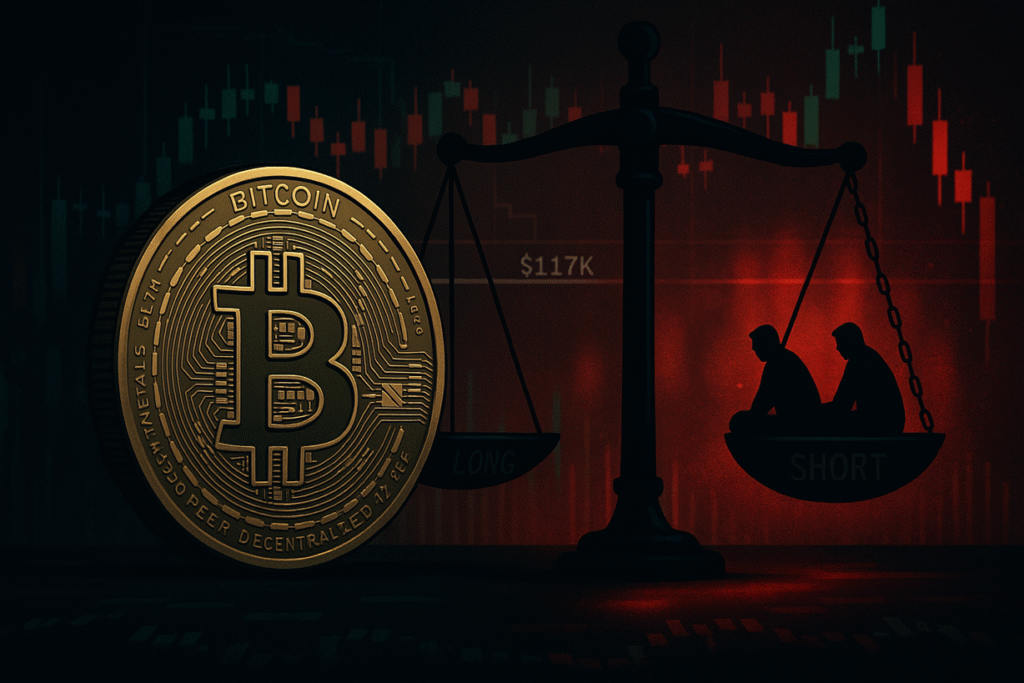Amidst the evolving dynamics of the cryptocurrency landscape, investors and traders continually seek the pulse of the market to make informed decisions. As Bitcoin remains a key player in the digital currency realm, its market movements and trader sentiments often serve as a barometer for broader crypto trends. This analysis delves into the prevailing sentiments within the Bitcoin derivatives market, shedding light on investor behavior and potential market implications. Stay informed to navigate the complexities of cryptocurrency investments with confidence.
Understanding Bitcoin Market Sentiment and Derivatives Trading
Bitcoin Short Positions Still Take the Lead
In recent insights shared by the renowned on-chain analytics firm, Glassnode, the sentiment within the Bitcoin derivatives market has been laid bare. Central to this discussion is the “Long/Short Bias” indicator, which provides a snapshot of the net positions taken by major market players. When this indicator is above zero, it signals that bullish positions (longs) surpass bearish ones (shorts), indicative of a positive market sentiment. Conversely, a negative reading suggests more traders are wagering against Bitcoin’s growth.
The accompanying chart from Glassnode reveals a consistent negative trend in the Long/Short Bias over the past month. This indicates a prevailing bearish sentiment, even as Bitcoin experienced a price resurgence earlier this month. Despite the upward movement in Bitcoin’s value, short positions have continued to maintain their dominance, outpacing long positions by approximately 485 BTC, valued at around $56.2 million.
Interestingly, historical patterns in cryptocurrency markets often witness assets moving contrary to prevailing trader expectations. This contrarian behavior suggests that the current dominance of bearish sentiment could signal upcoming bullish trends, challenging the short positions in the market.
The Bitcoin Options Market: Indicators and Implications
Further insights into Bitcoin’s market sentiment can be gleaned from metrics related to the Bitcoin Options market. Glassnode highlights the significance of the Implied Volatility (IV), a key indicator of future price fluctuations expected by options traders.
The focus here is on the “At-The-Money” (ATM) Implied Volatility, which specifically reflects expectations for options with strike prices near Bitcoin’s current market value. Analyzing recent trends, the 1-week Bitcoin ATM IV spiked in anticipation of the Federal Open Market Committee (FOMC) meeting but sharply declined following the Fed’s monetary policy announcement. This volatility pattern was not mirrored in longer-dated options, which showed stability post-FOMC, indicating minimal market reaction to the event.
Another crucial measure is the IV Index (DVOL), which consolidates expectations across various strike prices and expiration dates. Post-FOMC, DVOL’s decline confirmed that the market is not anticipating any significant price swings in the immediate future.
Current BTC Price Dynamics
Bitcoin recently made an upward move to approximately $117,900 but has since retracted to around $116,000. This fluctuation further emphasizes the market’s volatility and the importance of understanding trader sentiment and expectations.
Is Bitcoin a wise investment in the current market?
Investing in Bitcoin requires careful consideration of multiple factors, including market trends, regulatory developments, and macroeconomic influences. While historical performance shows significant appreciation in value, potential investors should conduct thorough research and consider their risk tolerance before investing.
What is the significance of the Long/Short Bias in Bitcoin trading?
The Long/Short Bias offers invaluable insights into market sentiment by illustrating whether traders are predominantly bullish or bearish. A positive bias suggests optimistic investor outlook, while a negative bias indicates a more cautious approach, often leading to key market movements.
How do implied volatility metrics affect Bitcoin options trading?
Implied Volatility (IV) is a fundamental metric in options trading, providing an estimate of future price volatility. Higher IV suggests greater expected price swings, influencing options pricing and trader strategies. Monitoring IV can help traders anticipate market shifts and adjust their positions accordingly.
In summary, this comprehensive evaluation of Bitcoin from a derivatives and options market perspective aims to equip investors with a deeper understanding of current trends and potential market movements. With an informed approach, readers can better navigate the cryptocurrency investment landscape.

